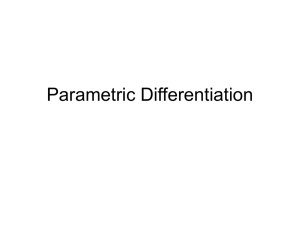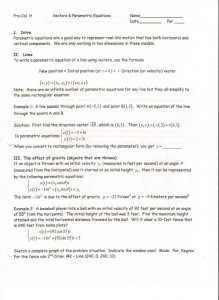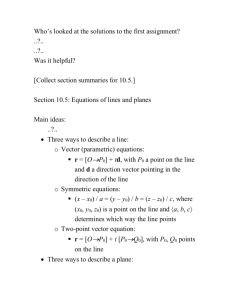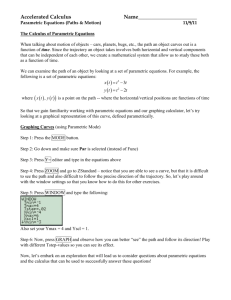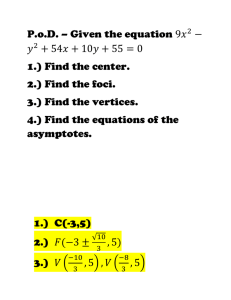11.3 Parametric Equations
advertisement
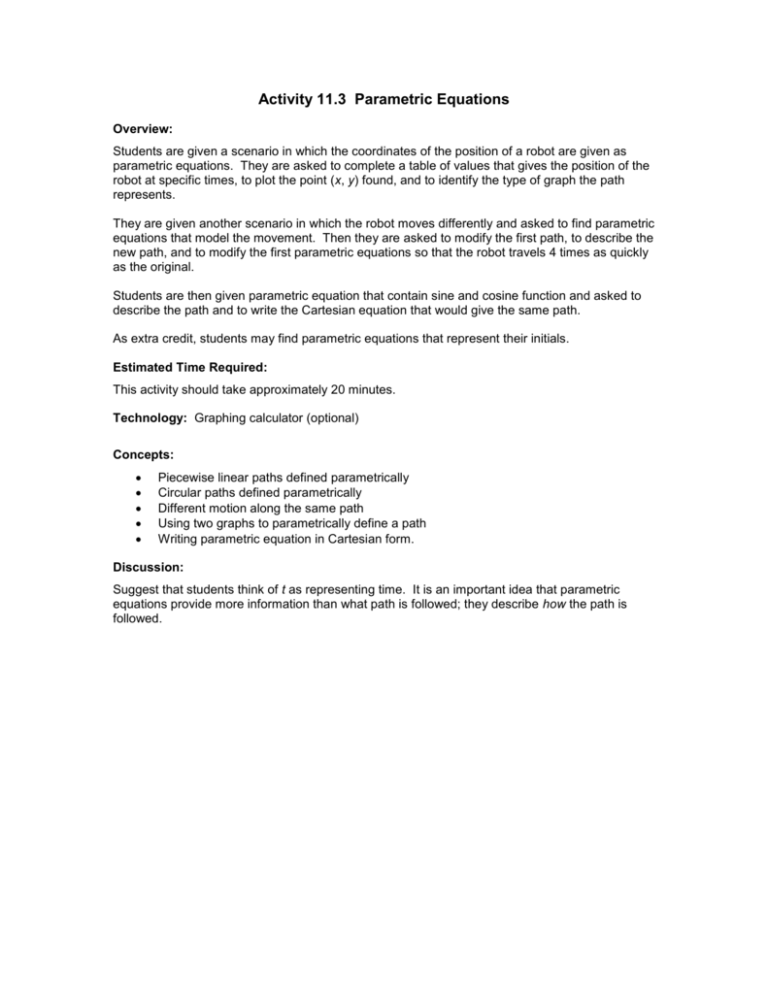
Activity 11.3 Parametric Equations Overview: Students are given a scenario in which the coordinates of the position of a robot are given as parametric equations. They are asked to complete a table of values that gives the position of the robot at specific times, to plot the point (x, y) found, and to identify the type of graph the path represents. They are given another scenario in which the robot moves differently and asked to find parametric equations that model the movement. Then they are asked to modify the first path, to describe the new path, and to modify the first parametric equations so that the robot travels 4 times as quickly as the original. Students are then given parametric equation that contain sine and cosine function and asked to describe the path and to write the Cartesian equation that would give the same path. As extra credit, students may find parametric equations that represent their initials. Estimated Time Required: This activity should take approximately 20 minutes. Technology: Graphing calculator (optional) Concepts: Piecewise linear paths defined parametrically Circular paths defined parametrically Different motion along the same path Using two graphs to parametrically define a path Writing parametric equation in Cartesian form. Discussion: Suggest that students think of t as representing time. It is an important idea that parametric equations provide more information than what path is followed; they describe how the path is followed. Activity 11.3 Parametric Equation Suppose you want a robot to move from the point A(1,1) to the point B(3,7). You must specify the robot’s location (in x and y coordinates) at each time during the trip from A to B. a.) If x 1 t , 0 t 2 , fill in the following table: y 1 3t t 0 0.5 1.0 1.5 2.0 x y b.) Plot the points (x,y) from the table above. c.) What type of graph is the resulting path? Can you find an equation for the path using only x and y? 2. Now consider moving from A to B along a different path. Suppose you first wish to travel vertically from A to C(1,7), and then horizontally from C to B. By treating each segment separately, come up with a set of equations that describes the motion of the robot. Be careful! 3. Going back to the path defined in Question 1, modify the equations by replacing t with 2t, and letting t vary from 0 to 1. What does your plot look like? Explain. 4. Now come up with a modification of equation 1 that traverses the path 4 times as quickly as the original. 5. Plot the parametric equations x cos t , 0 t 2 . What do you see? What Cartesian y sin t equation would give us the same graph? 6. For extra credit: determine the parametric equations necessary to graph one of your initials (You cannot use O.) Have all segments generated as t varies from 0 to 1.



